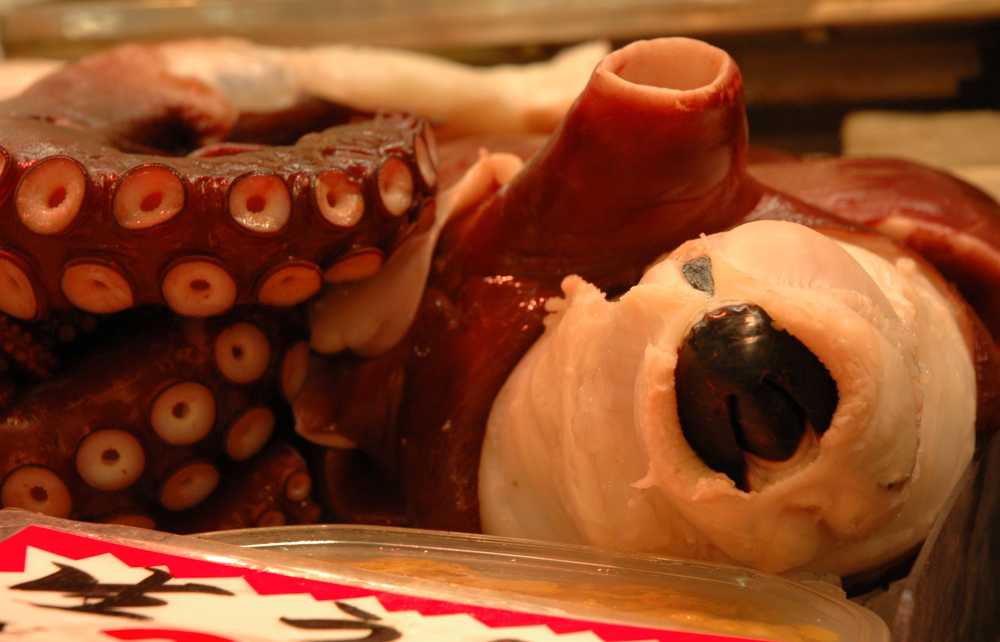Lift up an octopus’s arms, and tucked away in the center you will find an octopus beak. It’s a curious feature and a well-named one, looking just like the sort of structure you might find on a parrot’s face. But we’re talking about a mollusk here – so, how are they using them?
The purpose of the octopus beak taps into the discovery that all octopuses, cuttlefish, and some squid are venomous. Perhaps surprising to people who were familiar with the deadly venom of Australia’s adorable killer, the blue-ringed octopus, but always saw the giant pacific octopus as just a jolly ol’ floppy guy.
How do octopuses eat?
Octopus diet varies on species and their size, but generally speaking the menu looks like a combination of shellfish, small fishes, and other octopuses. They’re predatory animals that hunt most often at night, using their highly sensitive arms to wrap around prey.
The only time you’re likely to see an octopus beak is if the animal is dead, or really mad at you.
What’s up with that octopus beak?
Once captured, prey gets injected with venom via the octopus beak – sometimes directly to the eyeball. They can use it against prey but also as a defensive strategy, which is why you should never handle a blue-ringed octopus no matter how cute they look. Unfortunately, this did crop up on TikTok (though people have survived blue-ringed octopus bites).
The blue-ringed octopus and Antarctic octopus are the two most deadly octopuses for humans when it comes to their venom, says Oregon State University. Meanwhile, the world’s biggest – the giant Pacific octopus – could hurt you and it might slow healing, but the venom is unlikely to cause significant harm.
How do octopuses poop?
So we’ve established how an octopus hunts and subdues its prey, but once it’s gone into that bag-like body, where does it go? Enter, the octopus poop noodle.
In 2021, Monterey Bay Aquarium walked in on a strange scene unfolding in their giant Pacific octopus exhibit: a long string of waste was running from the octopus to the tank’s resident sea anemone. Quite the display – and the Internet wanted answers.
As MBARI explained, octopuses poop by excreting waste through their siphon, which is the muscular tube on the side of the head that they also use for propelling through the water. The narrow shape gives the feces a noodle-like shape, and should that noodle wind up in the path of a detrivorous anemone’s mouth? Well, how are they to refuse?
Isn’t it octopi?
No. Learn the correct plural for octopus here.
Source Link: All Octopuses Are Venomous, So How Are They Using It?
